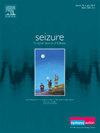自限性颞中央棘波癫痫(SeLECTS)的流行病学:一项利用初级保健记录进行的人口研究。
IF 2.7
3区 医学
Q2 CLINICAL NEUROLOGY
引用次数: 0
摘要
背景和目的:有关自限性癫痫伴心颞区棘波(SeLECTS)流行病学的信息十分有限。我们旨在确定SeLECTS在儿童中的发病率、其与社会经济贫困的关系以及神经发育合并症的发病率:我们使用匿名、链接、常规收集的威尔士儿童初级保健和人口统计学数据进行了一项回顾性队列研究(2004-2017 年)。我们使用初级保健诊断代码来识别患有 SeLECTS 和其他癫痫的儿童(0-16 岁),并记录抗癫痫药物 (ASM) 处方和神经发育合并症。我们使用混合效应泊松回归模型来确定SeLECTS发病率的时间趋势及其与社会经济贫困的关系:我们发现了6732名癫痫患儿,其中186人(3%)患有SeLECTS。2017年,癫痫和SeLECTS患病率分别为0.55%和0.02%,相应的粗发病率分别为51.2/100,000/年和1.1/100,000/年。儿童癫痫发病率随着贫困程度的降低而降低,与最贫困的五分之一人口相比,最不贫困人口的调整发病率比(AIRR)为 0.72(95% CI 0.64-0.82)。患有 SeLECTS 的儿童的相应调整发病率比为 1.35(95% CI 0.46-1.99)。威尔士 34% 的癫痫儿童、18% 的 SeLECTS 儿童和 3% 的儿童患有神经发育障碍或学业问题。半数 SeLECTS 患儿接受了 ASM 治疗:我们发现 SeLECTS 的发病率低于之前的报告,这可能是由于对 SeLECTS 的记录不足。随着时间的推移,SeLECTS的发病率没有变化,而儿童癫痫的总体发病率却在下降。SeLECTS发病率与贫困程度之间没有明显关联,但需要考虑到样本量不大的问题。应当对患有SeLECTS的儿童进行神经发育和学习合并症筛查。SeLECTS的治疗方法仍有待商榷。本文章由计算机程序翻译,如有差异,请以英文原文为准。
Epidemiology of self-limited epilepsy with centrotemporal spikes (SeLECTS): A population study using primary care records
Background and objective
Information on self-limited epilepsy with centrotemporal spikes (SeLECTS) epidemiology is limited. We aimed to determine the incidence of SeLECTS in children, its association with socioeconomic deprivation and the prevalence of neurodevelopmental comorbidities.
Method
We performed a retrospective cohort study (2004–2017) using anonymised, linked, routinely collected, primary care and demographic data for children in Wales. We used primary care diagnosis codes to identify children (aged 0–16 years) with SeLECTS and other epilepsies and to record antiseizure medication (ASM) prescriptions and neurodevelopmental comorbidities. We used a mixed effects Poisson regression model to determine temporal trends of SeLECTS incidence and its association with socioeconomic deprivation.
Results
We identified 6,732 children with epilepsy, 186 (3%) with SeLECTS. In 2017, epilepsy and SeLECTS prevalence was 0.55% and 0.02% respectively with corresponding crude incidence of 51.2/100,000/year and 1.1/100,000/year. The incidence of epilepsy in children decreased with decreasing deprivation with an adjusted incidence rate ratio (AIRR) of 0.72 (95% CI 0.64–0.82) in the least deprived compared with the most deprived quintile. The corresponding AIRR for children with SeLECTS was 1.35 (95% CI 0.46–1.99). 34% of children with epilepsy, 18% of children with SeLECTS and 3% of all children in Wales had a neurodevelopmental disorder and or school problems. Half of children with SeLECTS were treated with ASM.
Conclusions
We identified a lower than previously reported incidence of SeLECTS, which may be due to under-recording of SeLECTS. There was no change in the incidence of SeLECTS over time, whilst the incidence of childhood epilepsy overall was decreasing. There was no significant association between incidence of SeLECTS and deprivation but the modest sample size needs to be considered. Children with SeLECTS should be screened for neurodevelopmental and or learning comorbidities. Treatment for SeLECTS remains debatable.
求助全文
通过发布文献求助,成功后即可免费获取论文全文。
去求助
来源期刊

Seizure-European Journal of Epilepsy
医学-临床神经学
CiteScore
5.60
自引率
6.70%
发文量
231
审稿时长
34 days
期刊介绍:
Seizure - European Journal of Epilepsy is an international journal owned by Epilepsy Action (the largest member led epilepsy organisation in the UK). It provides a forum for papers on all topics related to epilepsy and seizure disorders.
 求助内容:
求助内容: 应助结果提醒方式:
应助结果提醒方式:


